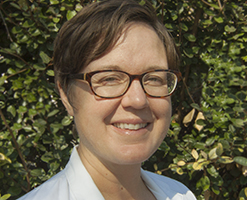 “High cholesterol runs in my family.” I hear this a lot. But, truth be told, deducing things to “running in the family” is pretty dismissive to understanding the root cause. It is kind of like saying, “headaches – they run in my family.” This can be true, but most of the time you and your family members probably are dehydrated and all need to drink more water, which is the root cause of 90% of headaches. That is just a basic human physiological need, not genetics.
“High cholesterol runs in my family.” I hear this a lot. But, truth be told, deducing things to “running in the family” is pretty dismissive to understanding the root cause. It is kind of like saying, “headaches – they run in my family.” This can be true, but most of the time you and your family members probably are dehydrated and all need to drink more water, which is the root cause of 90% of headaches. That is just a basic human physiological need, not genetics.
How does high cholesterol exactly run in your family? Solving this question gives you the truth behind your high cholesterol and the chance of fixing it. Do you all have the same poor eating habits? Does anyone exercise? Do your family members drink and smoke? Or, do you actually have Familial Hypercholesterolemia, in which case, you would have had elevated cholesterol in your teens or 20’s. If you developed high cholesterol in your 40’s, 50’s, or 60’s, then you have an environmental reason, in addition to your genetics. To assess the root cause, it’s important to overview the basic role of cholesterol.
Cholesterol is mainly comprised of High-Density Lipoproteins (HDL) and Low-Density Lipoproteins (LDL). Lipid panels or cholesterol tests are blood tests usually done at an annual physical. Elevated cholesterol means you are showing a risk factor for heart attack or stroke.
HDL is made in the liver and is usually described as “good” cholesterol because it actually absorbs cholesterol from the other tissues, most importantly blood vessels, and carries it back to the liver to process. HDL helps maintain healthy vessels by getting rid of the plaque that deposits in your arteries. Good HDL helps prevent atherosclerosis, coronary artery disease, heart attacks, and stroke. We want a robust HDL level – usually 60-90 mg/dL. Too much HDL (above 90) correlates with the same inflammation that increases the LDL, the “bad cholesterol.”
Low HDL indicates oxidative stress in the liver. HDL is an antioxidant to the liver, so decreased levels (below 60 mg/dL) signify liver inflammation most likely due to fatty liver disease or diets high in refined carbs. (1)
In addition, cholesterol (mainly the HDL, but somewhat the LDL) is an important component for the production of bile acids and steroid hormones (progesterone, testosterone, and estrogen). If these hormones are low, we usually want to look to see if HDL cholesterol is low. Statin drugs sometimes decrease the HDL along with the LDL, which is what we don’t want to see. If you have developed decreased testosterone, estrogen and progesterone levels after being prescribed statin drugs, it is useful to talk to your MD about possibly adjusting the medication.
LDL cholesterol is actually made in the plasma, not the liver. Now, let’s just put aside its “bad cholesterol” label for a minute and consider the basic role of LDL – to transport fat molecules around the body. LDL is made when a triglyceride is removed from VLDL (the “very bad” cholesterol). VLDL is made in the liver, just like HDL. The VLDL means Very Low Density Lipoprotein and is a “bad cholesterol” because it is found built up in the plaquing of arteries along with LDL. Like LDL, VLDL also moves cholesterol, triglycerides and fats around the body. (2)
These cholesterol molecules actually stabilize cell membranes and help the “gate-keeping” activity of the membrane. You want bad things to stay out and good things to stay in the cell. LDL and VLDL start to become imbalanced for a few different reasons. In order to be taken into the cell for use, LDL is absorbed by the cell membrane with the help of LDL-Receptors. A mutation in the LDL receptor gene can result in elevated cholesterol. When LDL receptors do not function well, LDL stays in the bloodstream longer than it should, creating that classic elevated cholesterol on your lipid panel. (3)
Sometimes this LDL build-up is simply just having too much LDL around than the cell can possibly take up. This can happen when we eat inflammatory foods (dairy and gluten are the biggest culprits) and a high carbohydrate diet. Yes, this is counter to the “low-fat” diet. I find that people are always really confused about this. Fats are not bad; it’s hydrogenated, trans fats that are bad (Crisco, canola oil, vegetable oil, corn oil). Good fats (fish, avocado, olive oil) are necessary for basic health.
Poor diet coupled with a sedentary lifestyle, and your genetics, typically graduates you into high cholesterol. In addition, certain medications increase LDL cholesterol – synthetic estrogen, progestins, and androgens, birth control pills, and COX inhibitors. (4) Consider all of these factors when you have elevated LDL.
The inherited component to LDL cholesterol (when it is NOT Familial Hypercholesterolemia) is usually related to the carnitine shuttle – a mechanism in a cell that shuttles in fatty acids to use for energy. In studies, the amino acid L-Carnitine does reduce LDL cholesterol and raise HDL. It likely does this by reducing the oxidative factors for the LDL and VLDL because it promotes the utilization of fatty acids into the cell for energy. (5)
Genetically speaking, you can have a slow carnitine shuttle – there are genetic mutations that have been identified in this pathway. What this typically means is that genetically, your ancestors moved a lot – they utilized a lot of physical activity in their day-to-day living. So, if you become sedentary, you don’t optimize your carnitine shuttle and you will increase your cholesterol.
Now that we have the roles of cholesterol understood, what do we do? We can focus on lowering the amount of circulating cholesterol with plant sterols, the place where statins come from. Particularly, red yeast rice will inhibit the enzyme that produces cholesterol (HMG CoA Reductase). The products we have found to be most effective are Cholestsure by DaVinci, Red Yeast Rice by Vinco, and Choleast by Thorne. Foods like ground flaxseeds, nopalitos, and steel cut oats also change the dietary absorption of cholesterol.
L-Carnitine can also be supplemented. You will usually see it in various forms; Acetyl L-Carnitine is the most active and is typically used for cholesterol support. Around 500-800 mg 1-3 x per day are starting dosages. I usually use Acetyl-L-Carnitine by Designs for Health or Pure Encapsulations. Coupled with diet and lifestyle changes, positive changes can be observed on repeat lipid panels.
Work with a healthcare professional to truly understand the root cause of high cholesterol. By incorporating strategies such as medications, supplementation, diet, and lifestyle changes, you can really begin to understand your body rather than writing off your high cholesterol as simply genetics. When you know reasons for pathology, you develop different strategies for health maintenance rather than just resigning to bandaids.
 Amy Nelson, ND* received her Naturopathic Doctorate from the National College of Natural Medicine in Portland, OR where she studied nutrition, homeopathy, herbal and functional medicine. In addition, Dr. Nelson was the Associate at The IBS Treatment Center in Santa Monica where she treated irritable bowel syndrome and complex food allergies. Dr. Nelson utilizes her experience in natural medicine to address female and male hormonal imbalances, mental health, and digestive disorders. Amy is available for consultation at Peoples North.
Amy Nelson, ND* received her Naturopathic Doctorate from the National College of Natural Medicine in Portland, OR where she studied nutrition, homeopathy, herbal and functional medicine. In addition, Dr. Nelson was the Associate at The IBS Treatment Center in Santa Monica where she treated irritable bowel syndrome and complex food allergies. Dr. Nelson utilizes her experience in natural medicine to address female and male hormonal imbalances, mental health, and digestive disorders. Amy is available for consultation at Peoples North.
*Although licensed in other states, Naturopathic Doctors are not currently licensed in Texas.
If you have comments and/or questions about this blog, email us at blog@peoplesrx.com.
- https://doi.org/10.1371/journal.pone.0102351
- “LDL and HDL: Bad and Good Cholesterol”. Centers for Disease Control and Prevention. CDC. Retrieved 11 September 2017
- https://doi.org/10.1002/humu.1380010602
- https://clinicaltrials.gov/ct2/show/NCT01279395#wrapper
- Longo N, Frigeni M, Pasquali M. Carnitine transport and fatty acid oxidation. Biochim Biophys Acta. 2016;1863(10):2422-2435. doi:10.1016/j.bbamcr.2016.01.023
